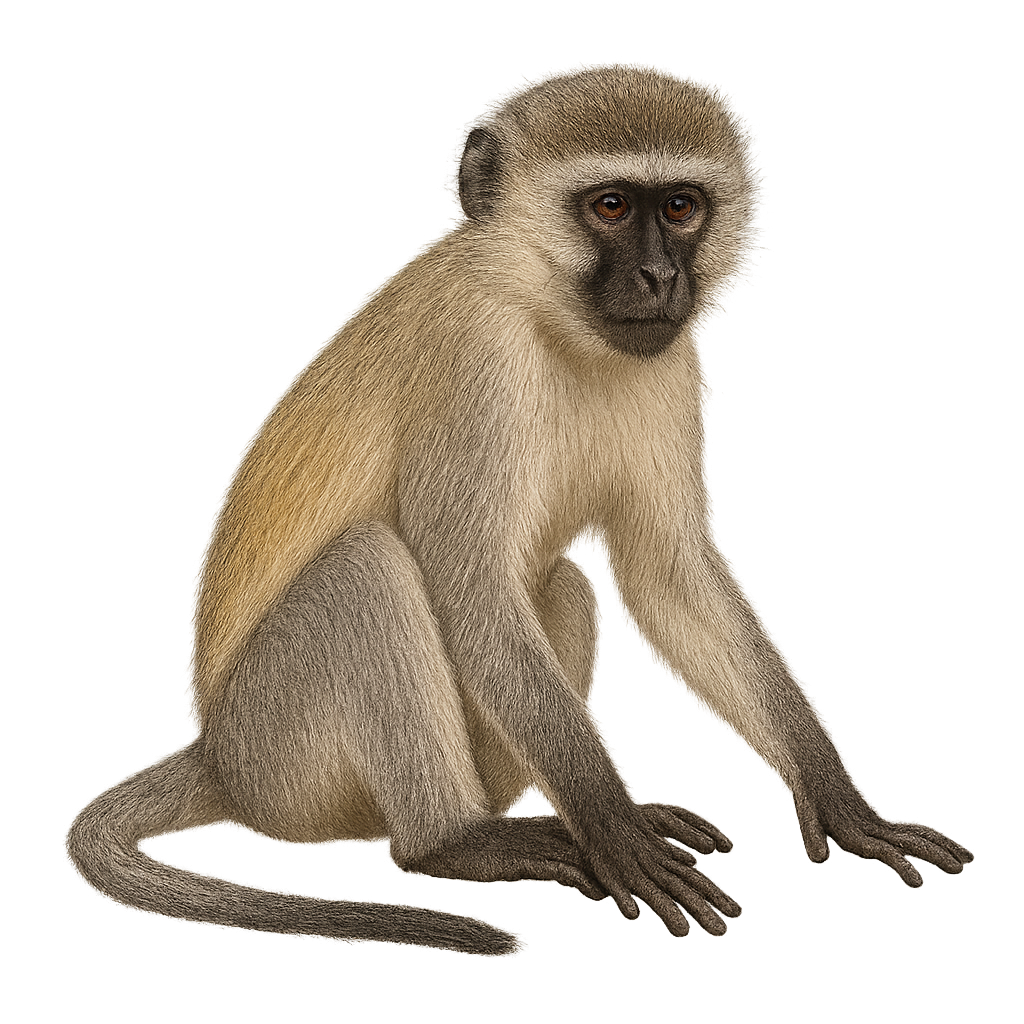Your wildlife photography guide.
Explore the vervet monkey in detail, study its behavior, prepare your shots.
Where to observe and photograph the vervet monkey in the wild
Learn where and when to spot the vervet monkey in the wild, how to identify the species based on distinctive features, and what natural environments it inhabits. The WildlifePhotographer app offers tailored photography tips that reflect the vervet monkey’s behavior, helping you capture better wildlife images. Explore the full species profile for key information including description, habitat, active periods, and approach techniques.
Vervet monkeys
Scientific name: Cercopithecus aethiops

IUCN Status: Least Concern
Family: CERCOPITHECIDAE
Group: Mammals
Sensitivity to human approach: Suspicious
Minimum approach distance: 10 m
Rut period: June to August
Gestation: 160-165 jours
Births: November to January
Habitat:
savannas, forests, urban areas
Activity period :
Primarily active during the day, with peak activity in the morning and late afternoon.
Identification and description:
The Cercopithecus aethiops, commonly known as the vervet monkey, is a medium-sized primate easily recognizable by its black face surrounded by white fur. It primarily inhabits the savannas and forests of sub-Saharan Africa. These monkeys are highly social, living in groups of up to 50 individuals. They communicate using various calls and facial expressions. Omnivorous, they feed on fruits, leaves, flowers, insects, and small animals. Their intelligence and adaptability allow them to acclimate to various environments, including urban areas. However, their proximity to humans can lead to conflicts, particularly due to their tendency to raid crops.
Recommended lens:
400 mm – adjust based on distance, desired framing (portrait or habitat), and approach conditions.
Photography tips:
To photograph vervet monkeys, it is advisable to use a telephoto lens of at least 400mm to capture detailed images without disturbing the animals. Be patient and observe their behavior to anticipate their movements. Vervets are active during the day, providing good natural light conditions. Opt for early morning or late afternoon hours to benefit from soft light. Maintain a safe distance of at least 10 m to avoid scaring them.
The WildlifePhotographer App is coming soon!
Be the first to explore the best nature spots, track rutting seasons, log your observations, and observe more wildlife.
Already 1 430 wildlife lovers subscribed worldwide

